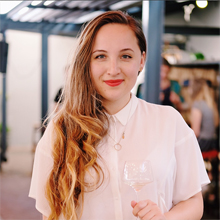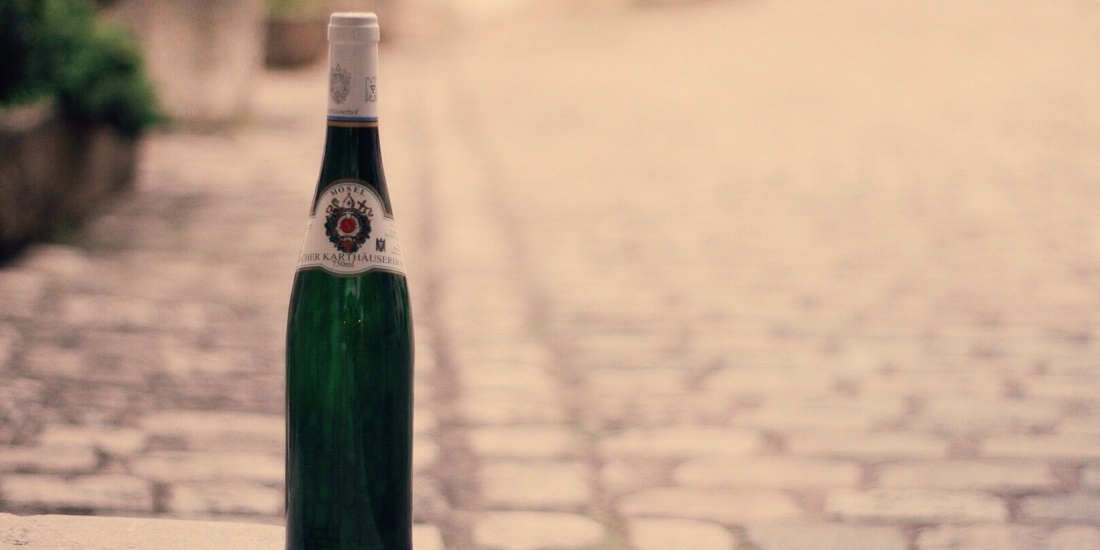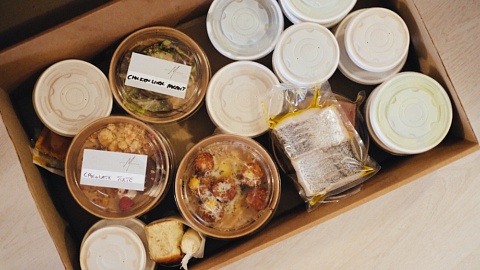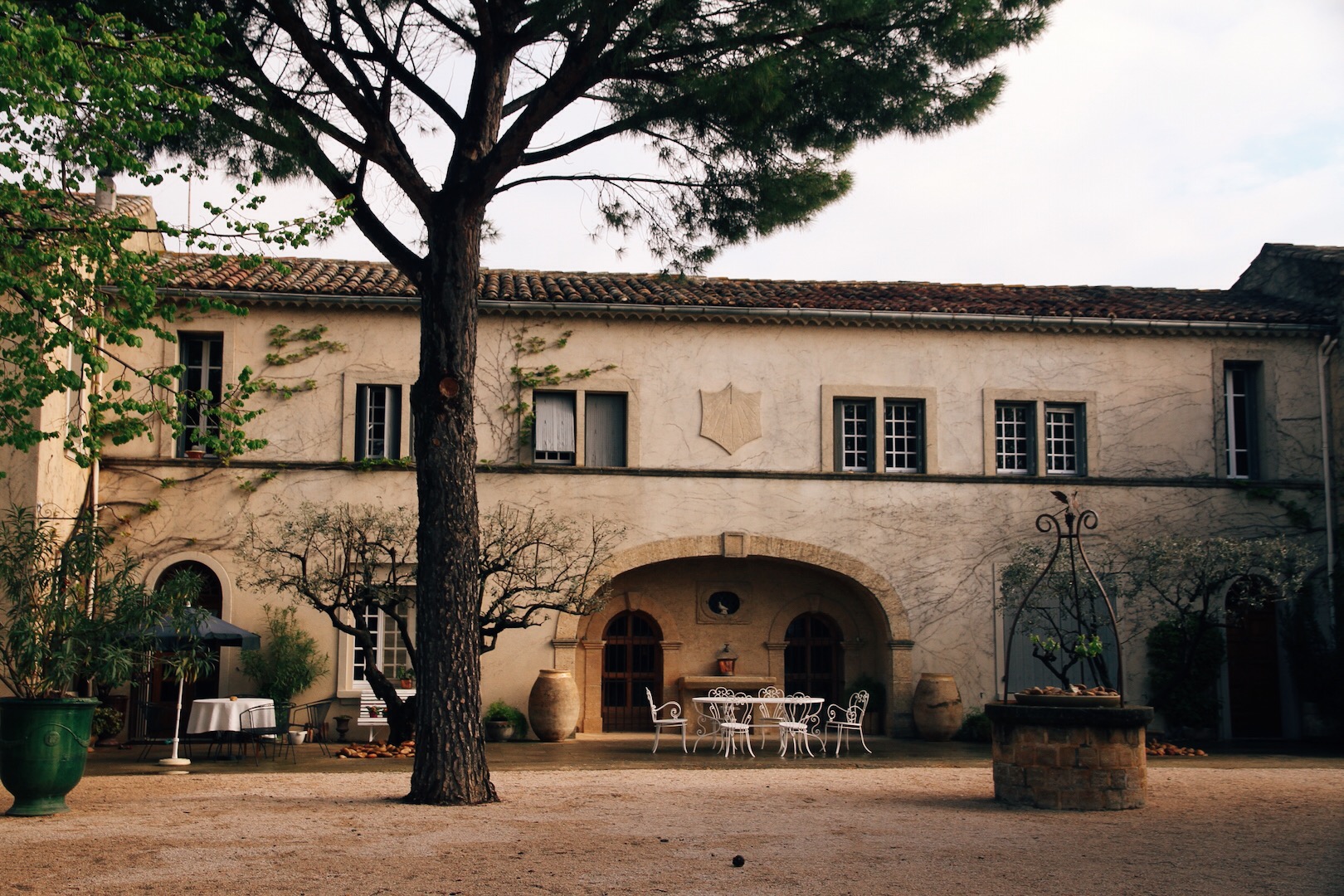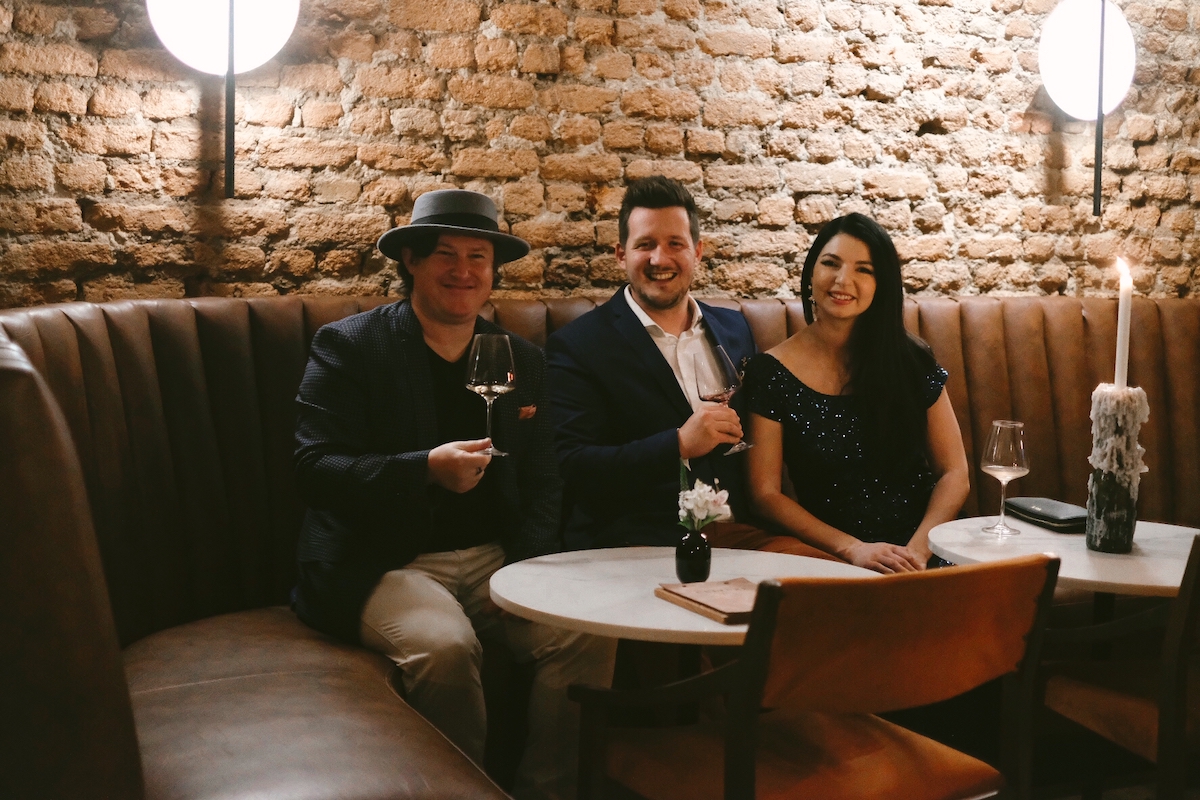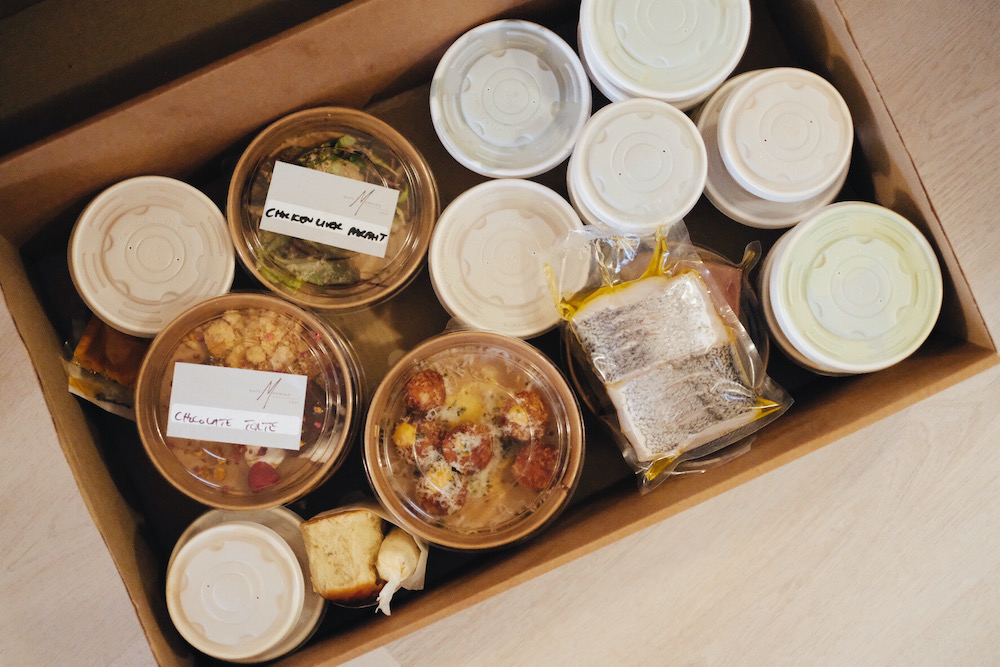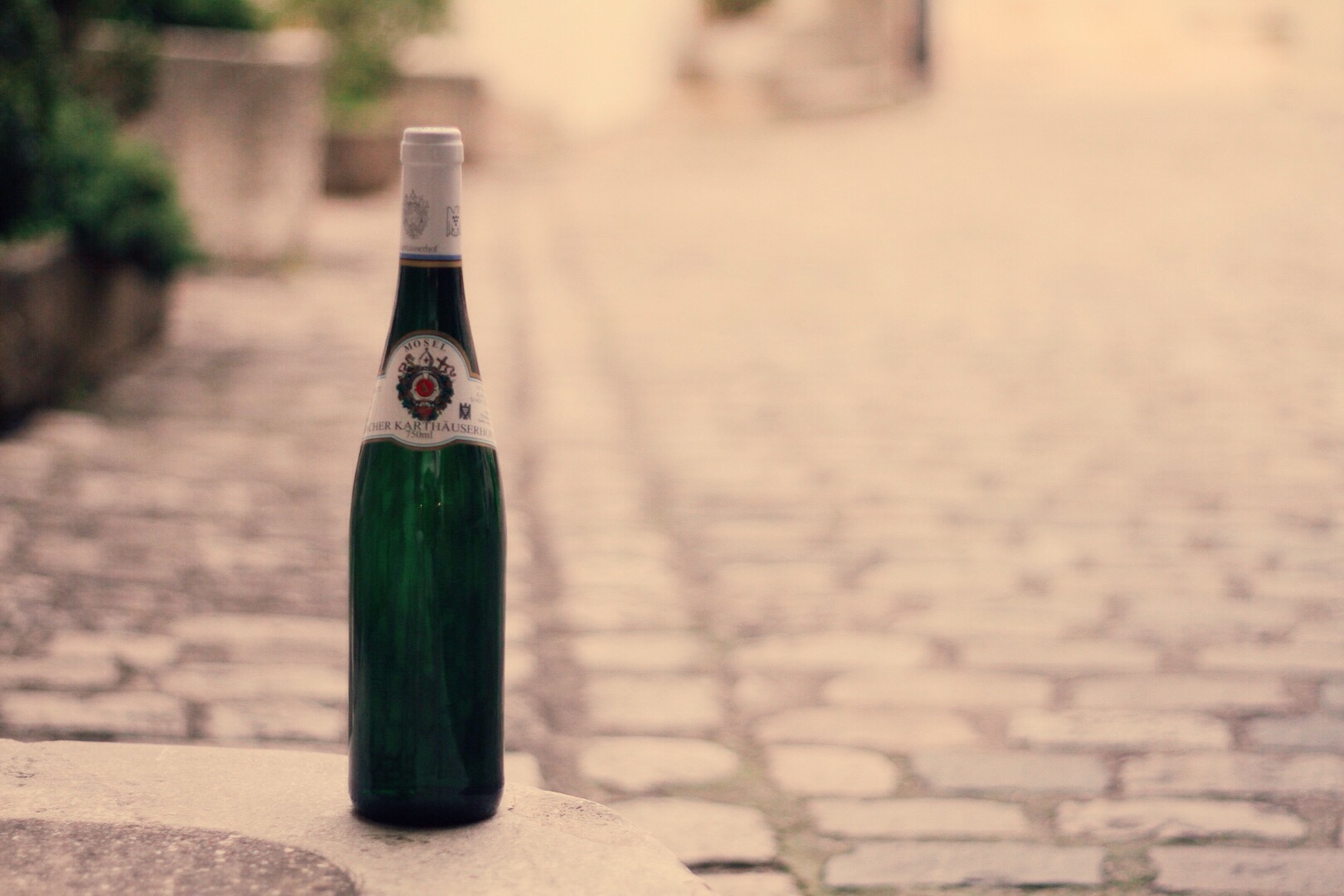 Riesling |ˈrēzliNG, ˈrēs-|
Riesling |ˈrēzliNG, ˈrēs-|
[noun]
In a sentence: ‘I love Riesling so much, I could have it with breakfast, second breakfast, brunch, elevenses, lunch, luncheon, afternoon tea, dinner, supper …’
Featured: Riesling (Kabinett Feinherb) from the winery Karthäuserhof in the Mosel Valley of Germany
Riesling is a white grape, and so it makes a white wine (surprise!). It’s light-skinned, and as the grapes are often allowed to ripen for longer on the vine, their colour tends to be a mix of shades as different grapes ripen at different times. This creates a multi-coloured balloon-style bunch, with grape shades ranging from Granny Smith apple-green and golden-wheat yellow to violet purple botrytised grapes.
Riesling is, without a doubt, our favourite wine. Why? Quite simply, it delivers on every aspect of a good wine – colour, aroma and taste. Imagine a zesty, fruity wine that’s delicate on the tongue, but leaves no saccharine-sweet aftertaste. It’s sort of what drinking a lemon meringue pie would be like. The level of sweetness in a Riesling depends on the style the winemaker made it in. In Germany, the King of Riesling’s winemaking regions, you’ll find a range of wines that increase incrementally in sweetness, starting at the first level called Kabinett and ending at the final level of ultimate sweetness, something called Trockenbeerenauslese (meaning ‘dried berry selection’). Trockenbeerenauslese (go on, try say it, you’ll feel like a pro!) is made using hand-picked and selected botrytised grapes, meaning it’s like sippin’ honey-syrupy heaven. If some German ever offers you a taste, trust us, just say YES.
The key to Riesling is its naturally high acidity, meaning you can have it whenever you want! If you drink it while it’s still relatively young, you’ll taste a beautifully fruity wine with aromas of lime, peach and honey. However, the high acidity means you can age your bottle (if it’s a really top notch bottle) for hundreds of years to develop more layered smells of beeswax, rubber and petrol. Yes. Petrol. All you need to know is that’s got to do with a chemical aroma called TDN. Gosia’s notorious for rolling down her window and happily sniffing the air when filling up her car at a petrol station, so you can imagine how happy she is at being able to grab a hint of gasoline in her wine (…as weird as that sounds).
There is some bad news though. Riesling is chiefly produced in small regions of Germany, Australia, the USA and some parts of France, Austria, New Zealand and Canada. This means it’s not as easy to find on South African shelves. The good news is that some local producers like Paul Cluver have started playing around with their own versions. It’s not quite the same though. That’s why we’ll forever be on the hunt for our perfect glass of Riesling.
